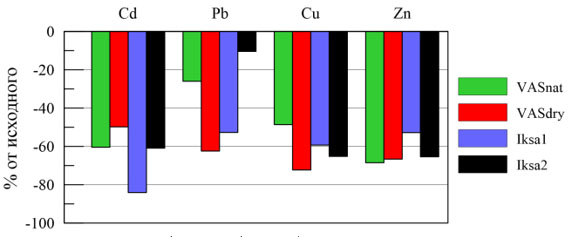Dynamics of the heavy metals content (Zn, Cd, Pb, Cu) during the decomposition of sphagnum moss at the drained and post-pyrogenic sites of oligotrophic bogs
DOI:
https://doi.org/10.31251/pos.v6i3.237Keywords:
transformation of plant residues; heavy metals; biogeochemical cycle; pyrogenic peatlands; drained peatlands; West Siberia.Abstract
The aim of the study. Assessment of heavy metals (Zn, Cd, Pb, Cu) dynamic during the decomposition of Sphagnum fuscum L. in native, drained and post-pyrogenic oligotrophic peatlands.
Location and time of the study. The study was carried out in 2019–2021 in two oligotrophic bogs: “Bakcharskoye” (field station “Vasyuganye” (IMCES SB RAS)) and “Iksinskoye”, which are the north-eastern spurs of the Great Vasyugan mire and located in the Bakcharsky district of the Tomsk region.
Methods. Decomposition rate of Sph. fuscum L. was determined by the method of partially isolated samples, which is widely used to study the processes of transformation of plant material and peat. In the original and decomposed samples of sphagnum moss and peat soil (in layers 0-10, 10-20, 20-30), the ash content of peat was determined according to GOST-11306-83. The percentage of total carbon and nitrogen in samples of peat (up to 30 cm from the surface) and plant residues was determined together with the determination of isotopic composition using EA-IRMS (Elemental Analyzer/Isotope Ratio Mass Spectrometry). The concentrations of heavy metals (Zn, Cd, Pb, Cu) in samples of peat and plant residues were determined by stripping voltammetry.
Results. Three-year experiment on decomposition of Sph. fuscum in four ecosystems (natural – VASnat, drained – VASdry, post-pyrogenic – Iksa 1 and Iksa2) showed that fire affected the decomposition rate: on average, mass loss in post-pyrogenic bogs was 1.4–1.6 times lower compared to the natural site. For almost all sites, a relationship was found between the mass loss and the concentration of heavy metals, with the exception of Cd during the first year of the experiment. The concentration of all elements in moss residues decreased during the decomposition process at all study sites. During moss decomposition the similarity in the release of biogenic elements Cu and Zn was recorded in the drained and post-pyrogenic sites (VASdry, Iksa1, Iksa2), while for Cd and Pb, which are not biogenic elements, such similarity was not revealed.
Conclusions. Peat fires affect plant residue decomposition by decreasing its rate of decomposition. The study revealed incremental dynamics of HMs content in plant residues: at the initial stage, HMs are released, whereas during the second and third years, in some cases, the accumulation of HMs is observed. However, by the end of the experiment, the release of heavy metals during decomposition was observed for all elements.
Downloads

Downloads
Published
How to Cite
Issue
Section
License
Copyright (c) 2023 The Journal of Soils and Environment

This work is licensed under a Creative Commons Attribution 4.0 International License.






